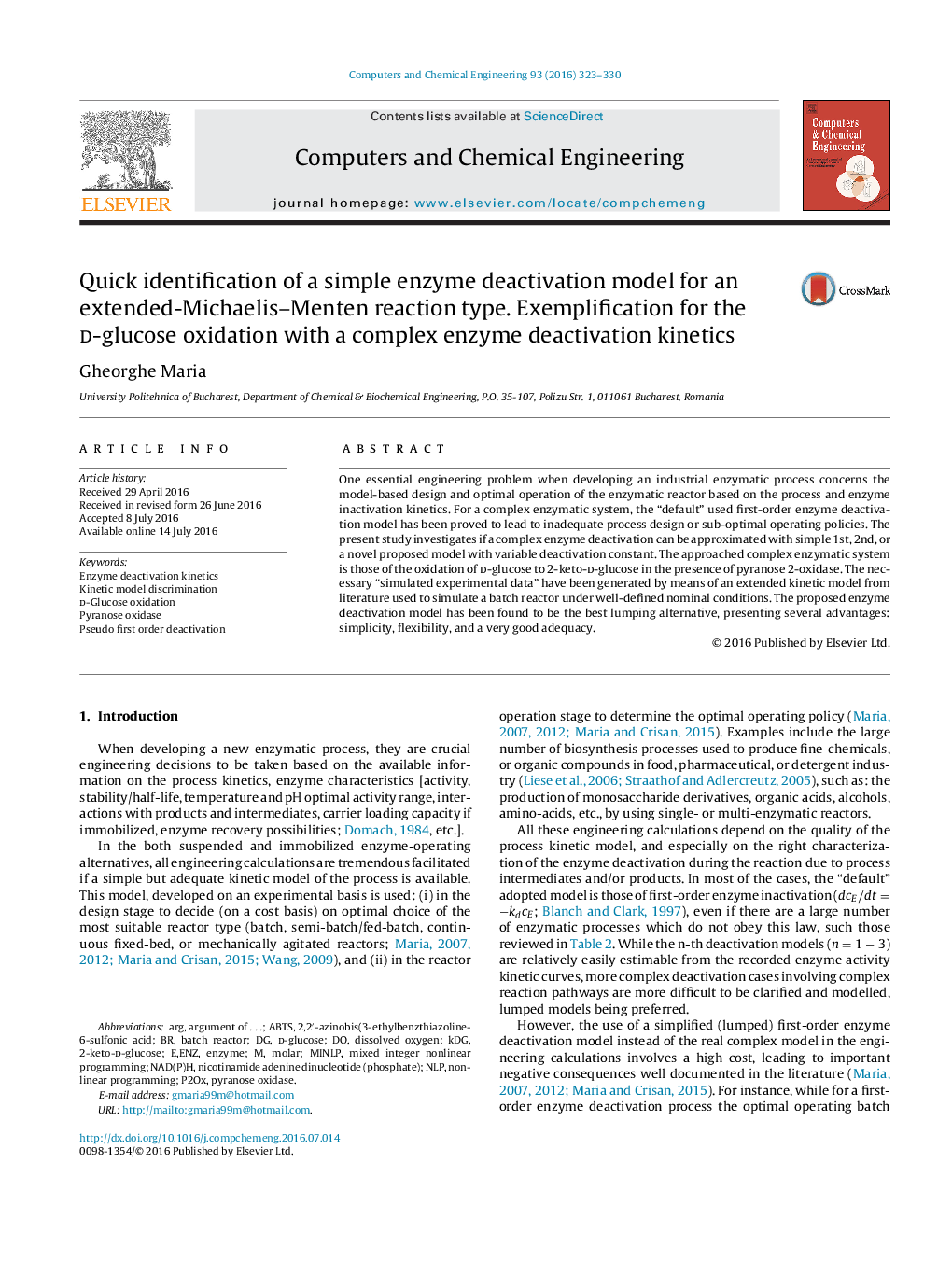| Article ID | Journal | Published Year | Pages | File Type |
|---|---|---|---|---|
| 171999 | Computers & Chemical Engineering | 2016 | 8 Pages |
•d-Glucose is oxidized using pyranose-2-oxidase P2Ox in a batch experiment.•P2Ox is inactivated by the resulted H2O2 following a complex reaction mechanism.•Simple lumped enzyme deactivation models are tested vs. simulated kinetic data.•The data are generated using an extended process kinetic model from literature.•A proposed enzyme deactivation model has been found to be the best lumping alternative.
One essential engineering problem when developing an industrial enzymatic process concerns the model-based design and optimal operation of the enzymatic reactor based on the process and enzyme inactivation kinetics. For a complex enzymatic system, the “default” used first-order enzyme deactivation model has been proved to lead to inadequate process design or sub-optimal operating policies. The present study investigates if a complex enzyme deactivation can be approximated with simple 1st, 2nd, or a novel proposed model with variable deactivation constant. The approached complex enzymatic system is those of the oxidation of d-glucose to 2-keto-d-glucose in the presence of pyranose 2-oxidase. The necessary “simulated experimental data” have been generated by means of an extended kinetic model from literature used to simulate a batch reactor under well-defined nominal conditions. The proposed enzyme deactivation model has been found to be the best lumping alternative, presenting several advantages: simplicity, flexibility, and a very good adequacy.
Graphical abstractFigure optionsDownload full-size imageDownload as PowerPoint slide
